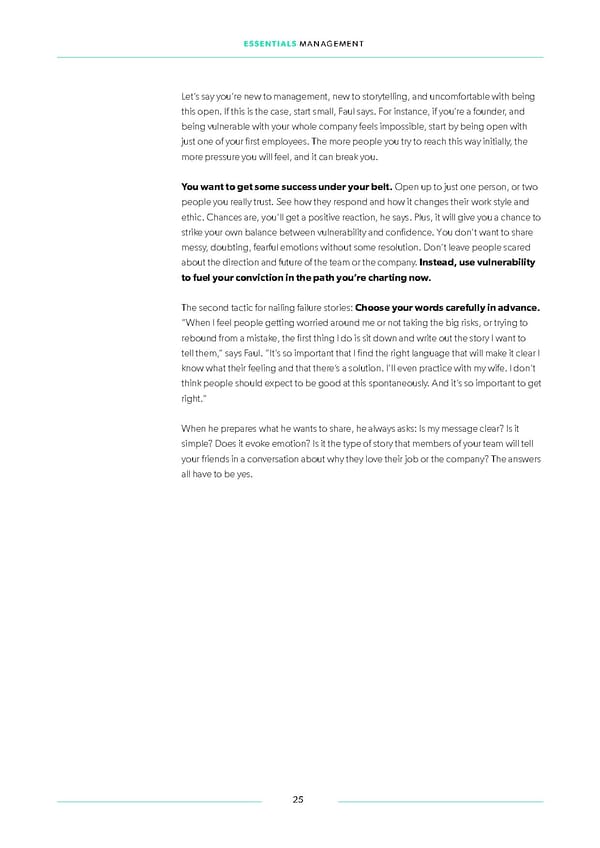ESSENTIALS MANAGEMENT Let’s say you’re new to management, new to storytelling, and uncomfortable with being this open. If this is the case, start small, Faul says. For instance, if you’re a founder, and being vulnerable with your whole company feels impossible, start by being open with just one of your ifrst employees. The more people you try to reach this way initially, the more pressure you will feel, and it can break you. You want to get some success under your belt. Open up to just one person, or two people you really trust. See how they respond and how it changes their work style and ethic. Chances are, you’ll get a positive reaction, he says. Plus, it will give you a chance to strike your own balance between vulnerability and conifdence. You don’t want to share messy, doubting, fearful emotions without some resolution. Don’t leave people scared about the direction and future of the team or the company. Instead, use vulnerability to fuel your conviction in the path you’re charting now. The second tactic for nailing failure stories: Choose your words carefully in advance. “When I feel people getting worried around me or not taking the big risks, or trying to rebound from a mistake, the ifrst thing I do is sit down and write out the story I want to tell them,” says Faul. “It’s so important that I ifnd the right language that will make it clear I know what their feeling and that there’s a solution. I’ll even practice with my wife. I don’t think people should expect to be good at this spontaneously. And it’s so important to get right.” When he prepares what he wants to share, he always asks: Is my message clear? Is it simple? Does it evoke emotion? Is it the type of story that members of your team will tell your friends in a conversation about why they love their job or the company? The answers all have to be yes. 25
 Essentials Management First Round Capital Page 24 Page 26
Essentials Management First Round Capital Page 24 Page 26